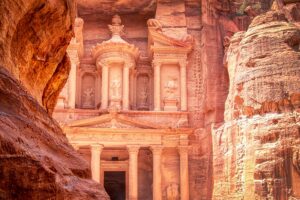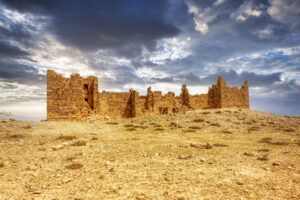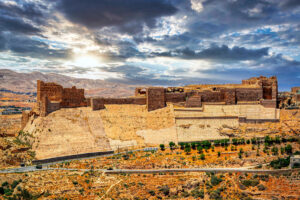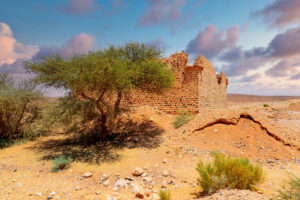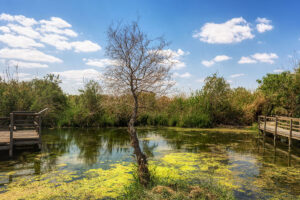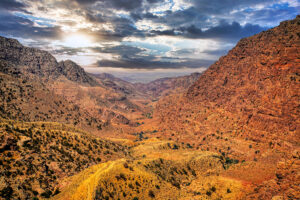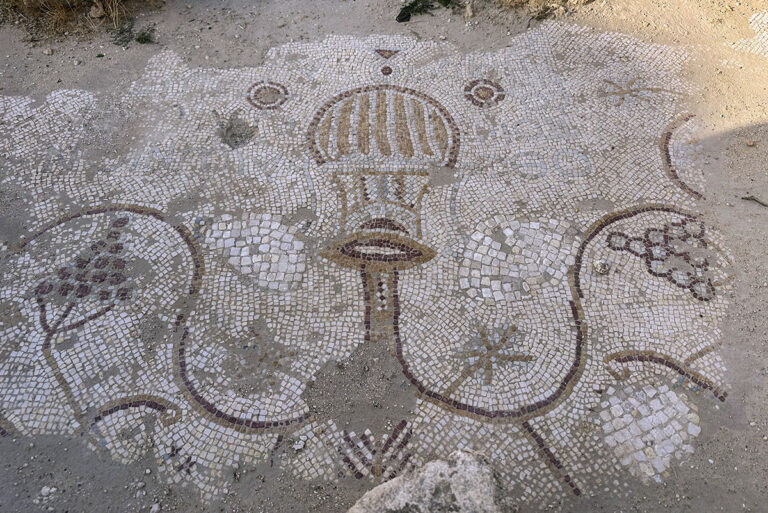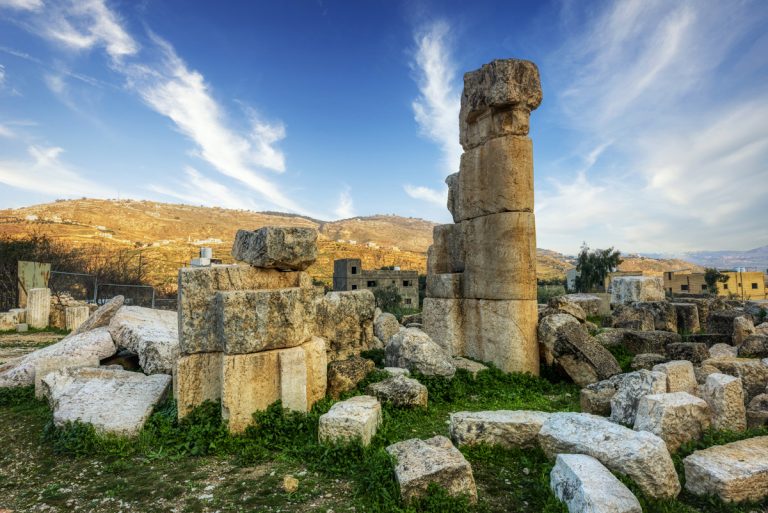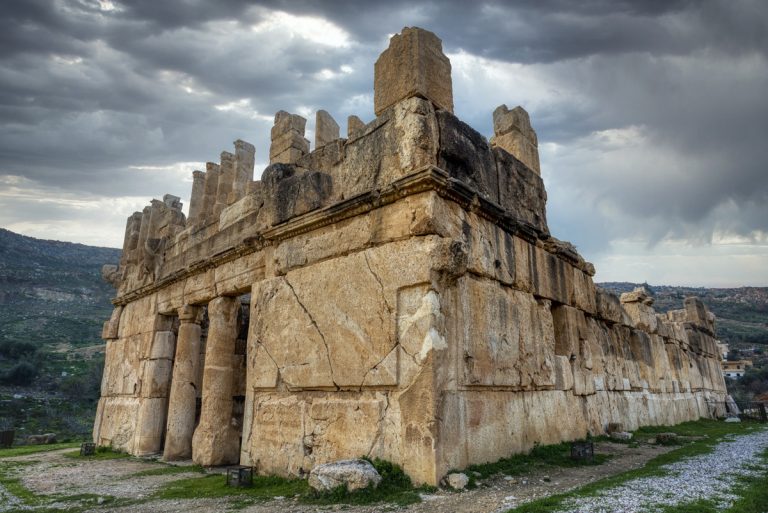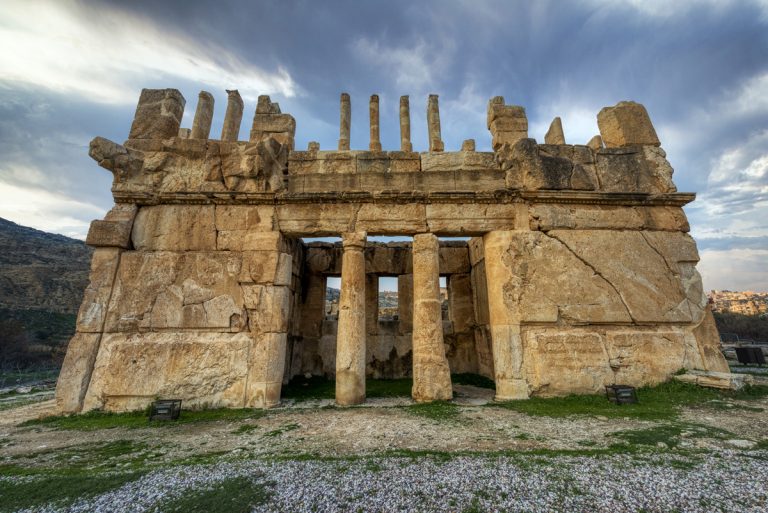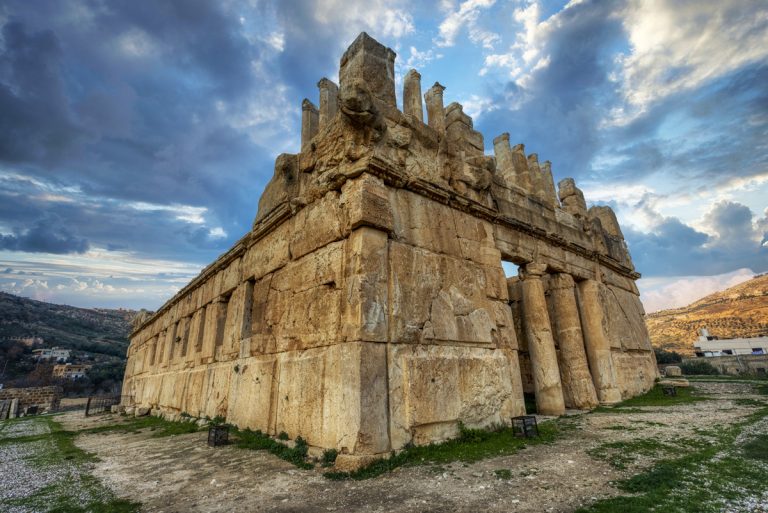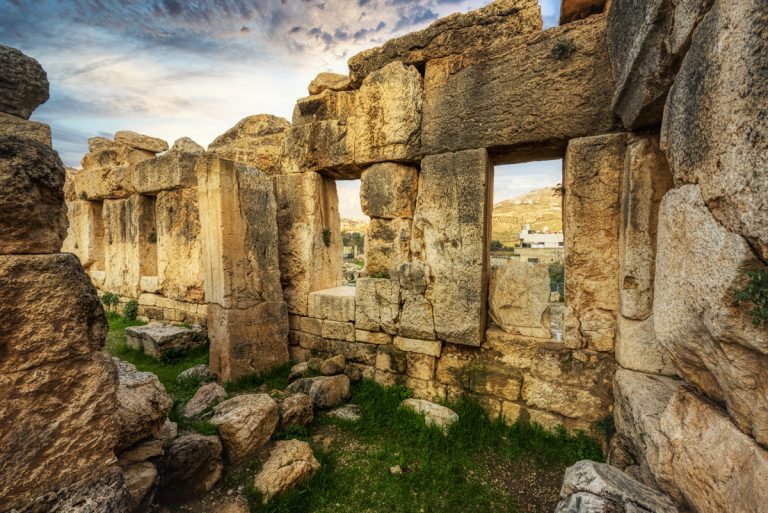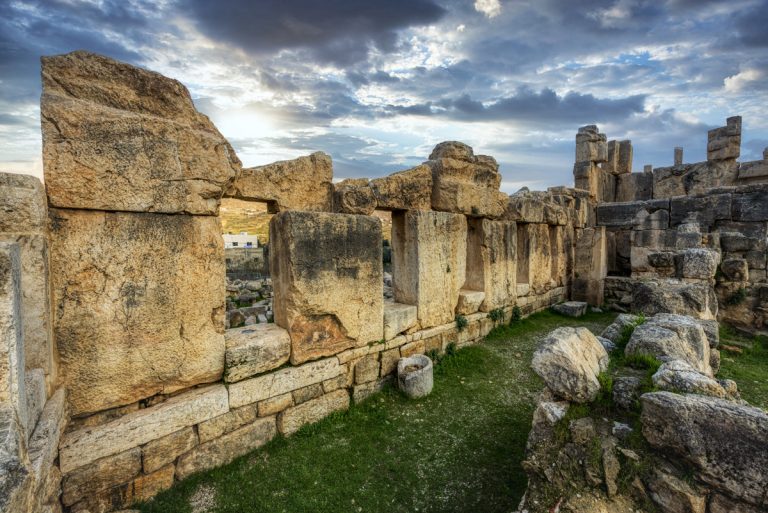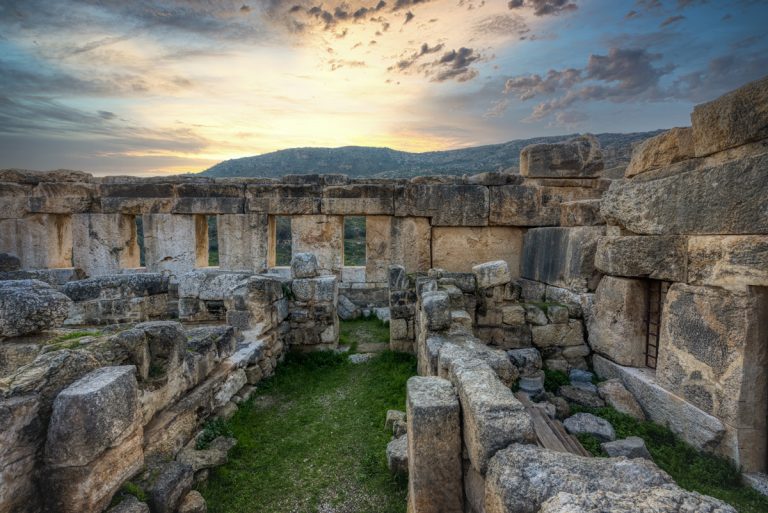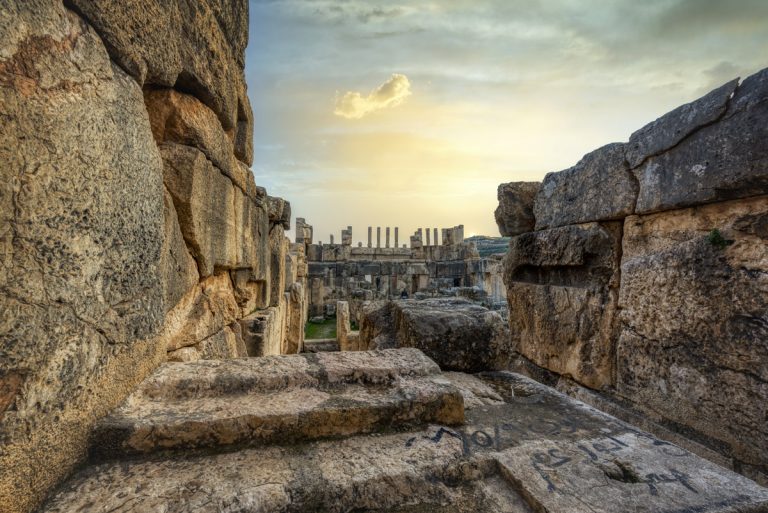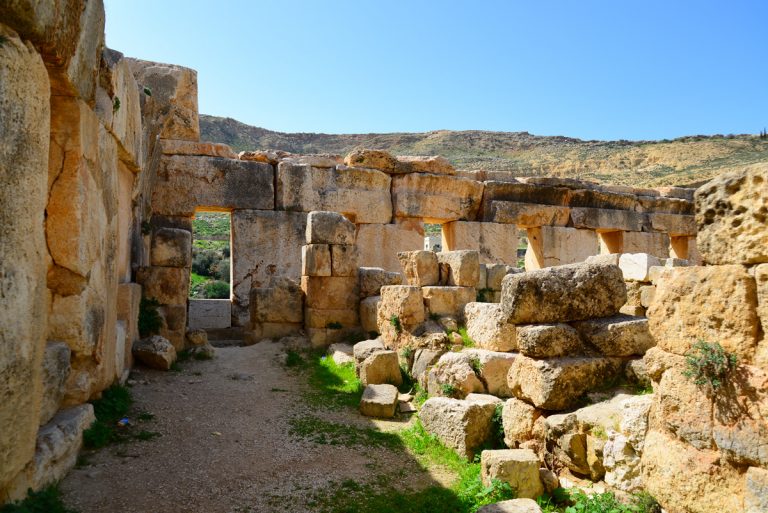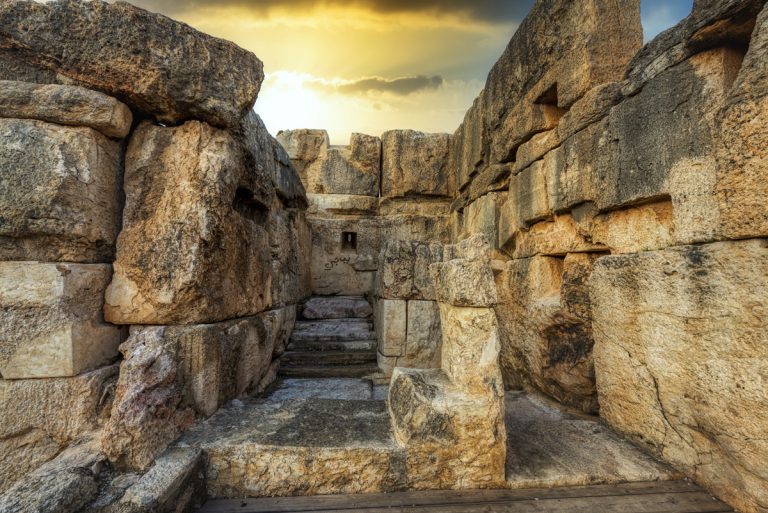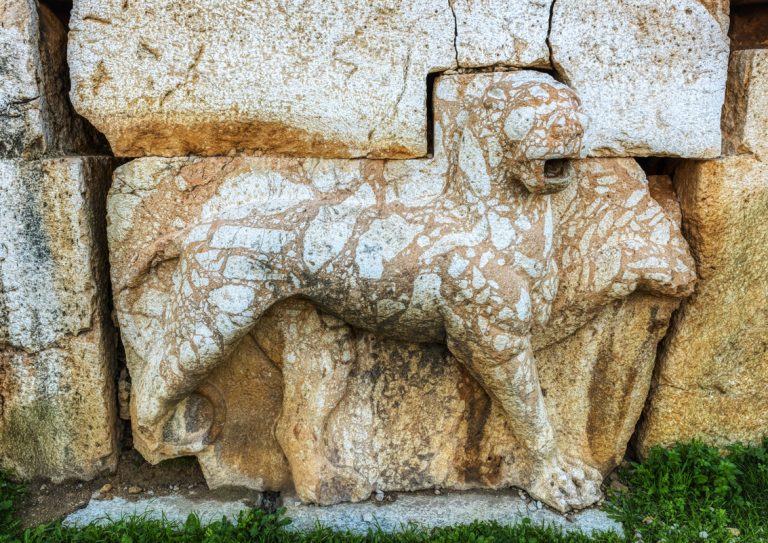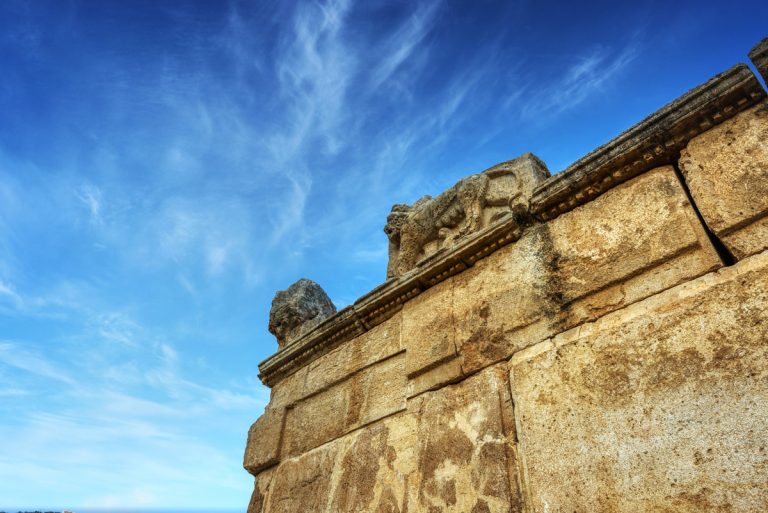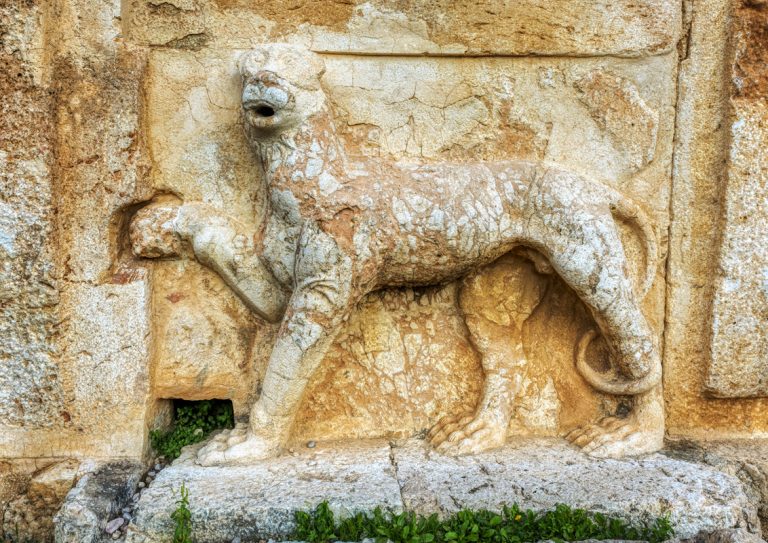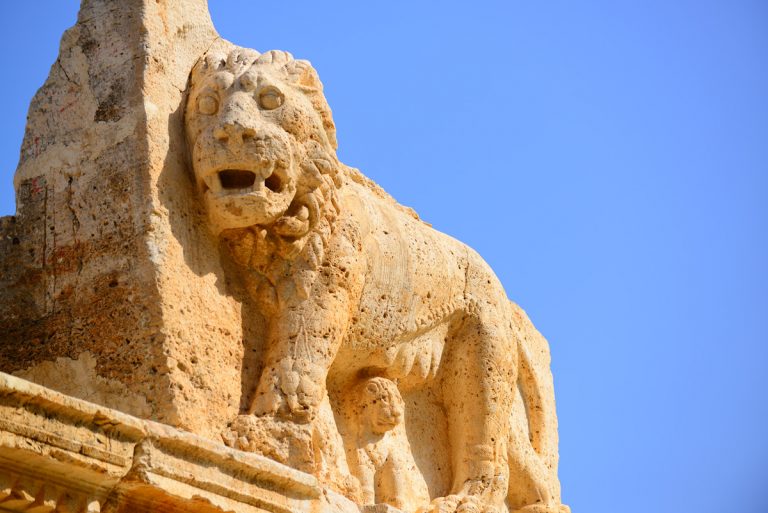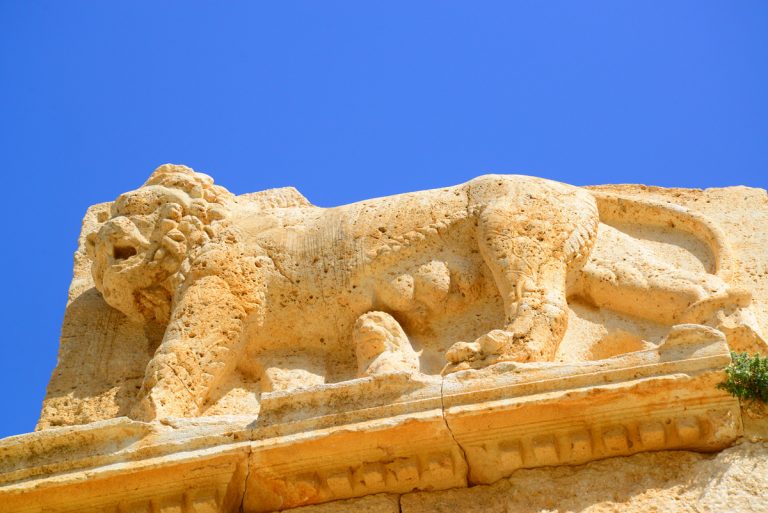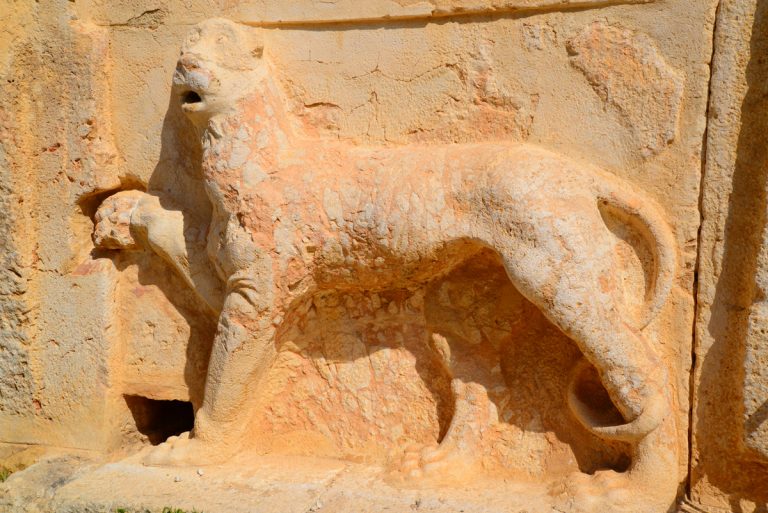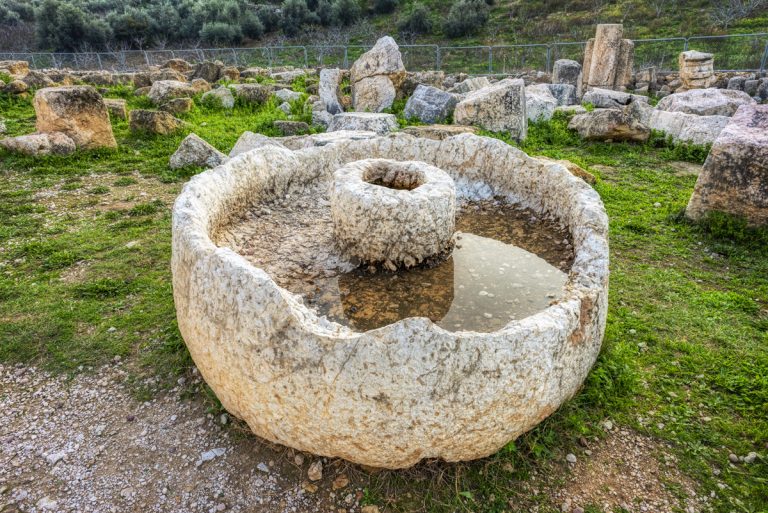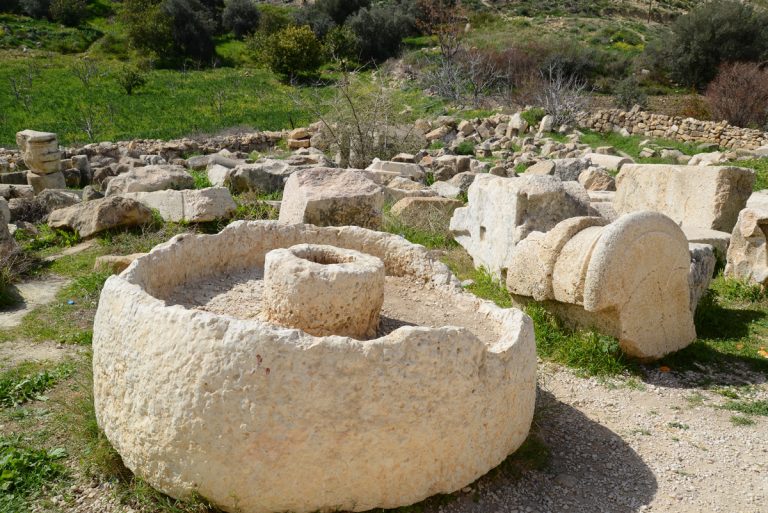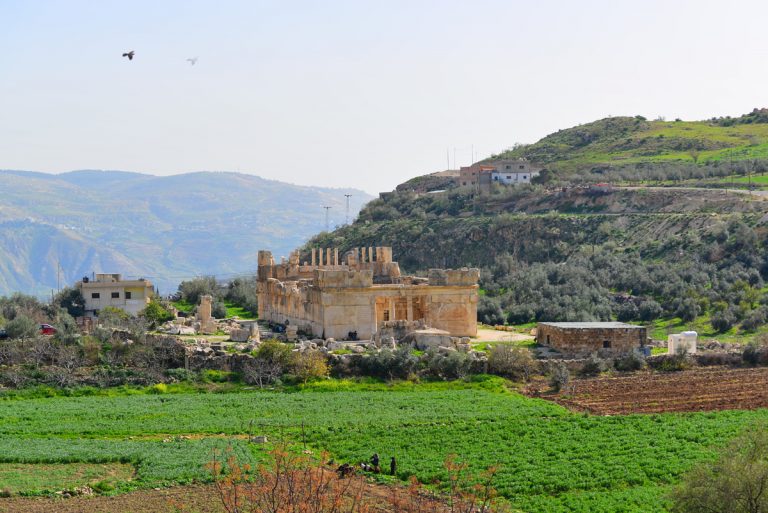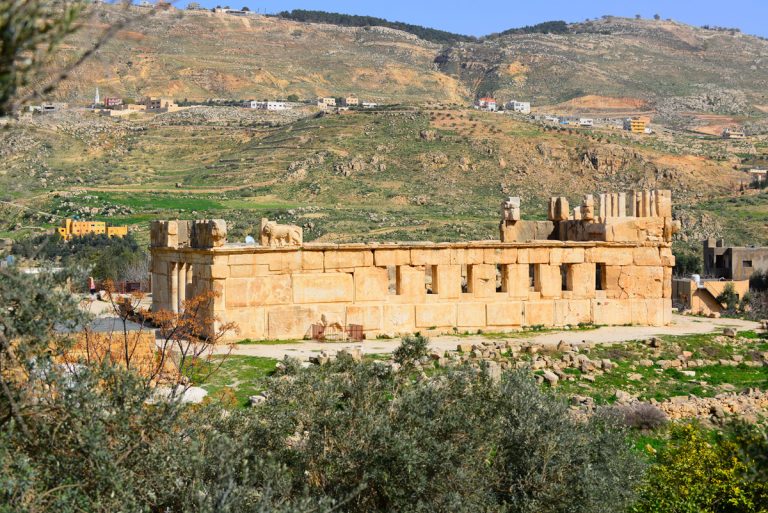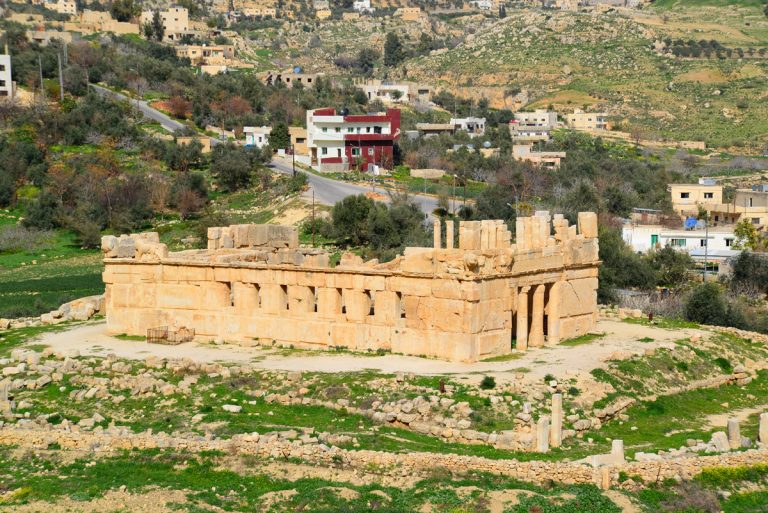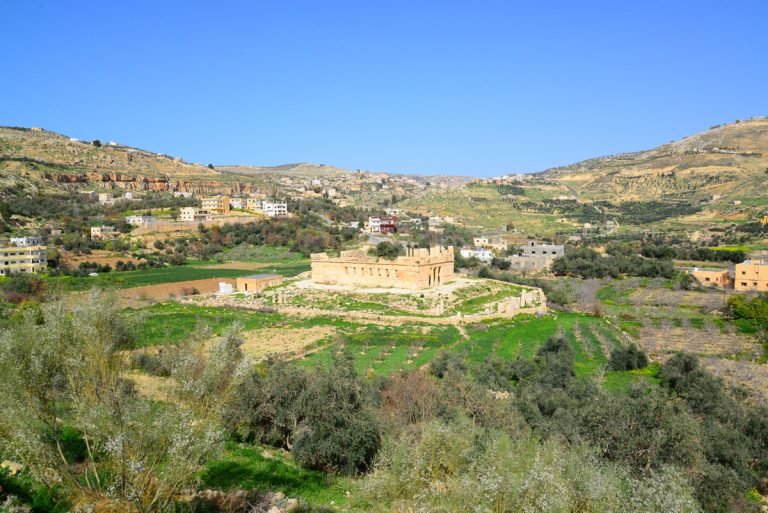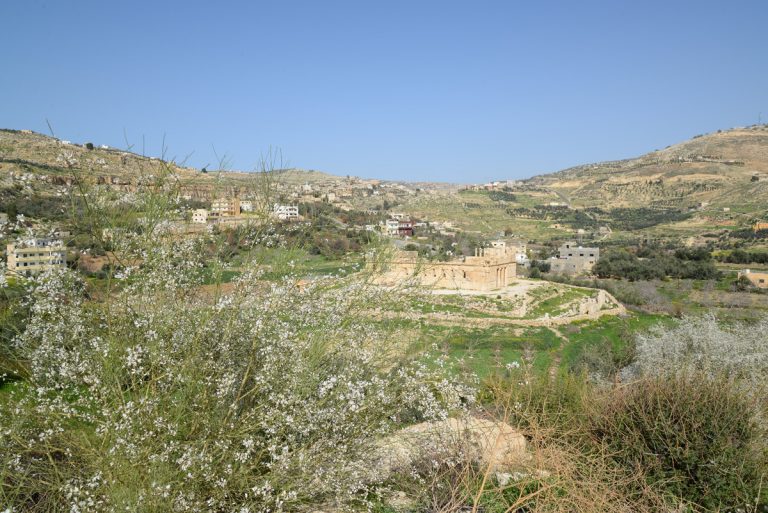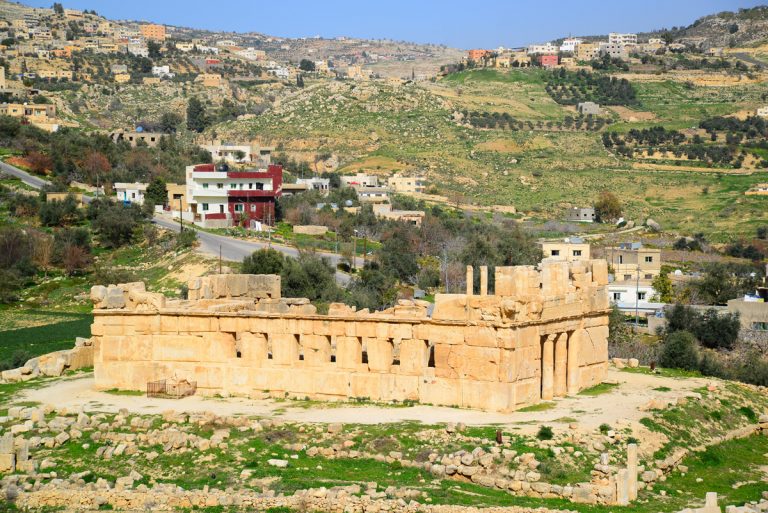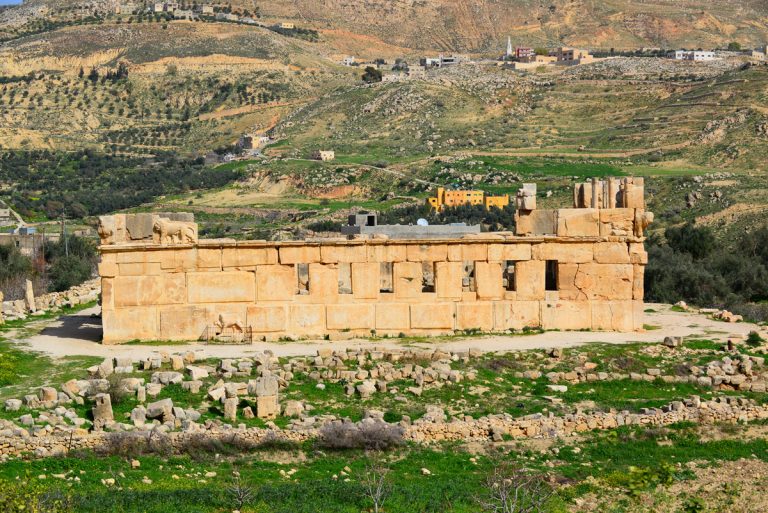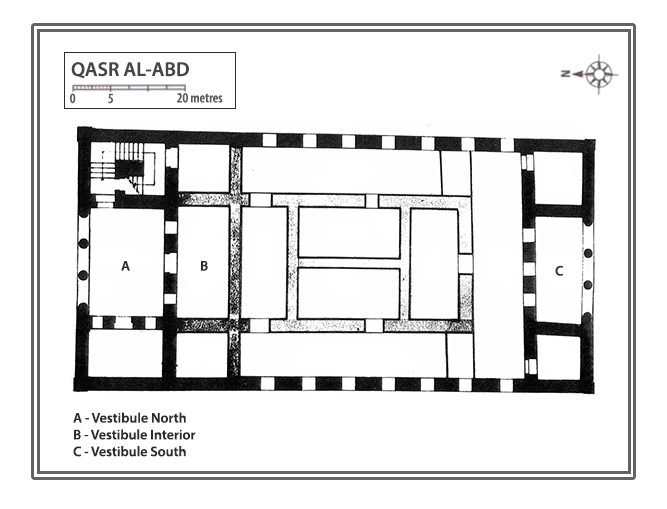Nestled in the heart of Jordan, the Qasr Al-Abd stands as a captivating testament to the influence of Hellenistic architecture in the region. Built between 182 and 175 BC, this extraordinary two-storey palace, perched on an elevated platform amidst an artificial lake, is a gem for architecture enthusiasts and history buffs alike. Its monumental structure, crafted from some of the largest stone blocks in the Middle East—one measuring an astonishing seven by three metres—showcases the grandeur and ambition of its design.
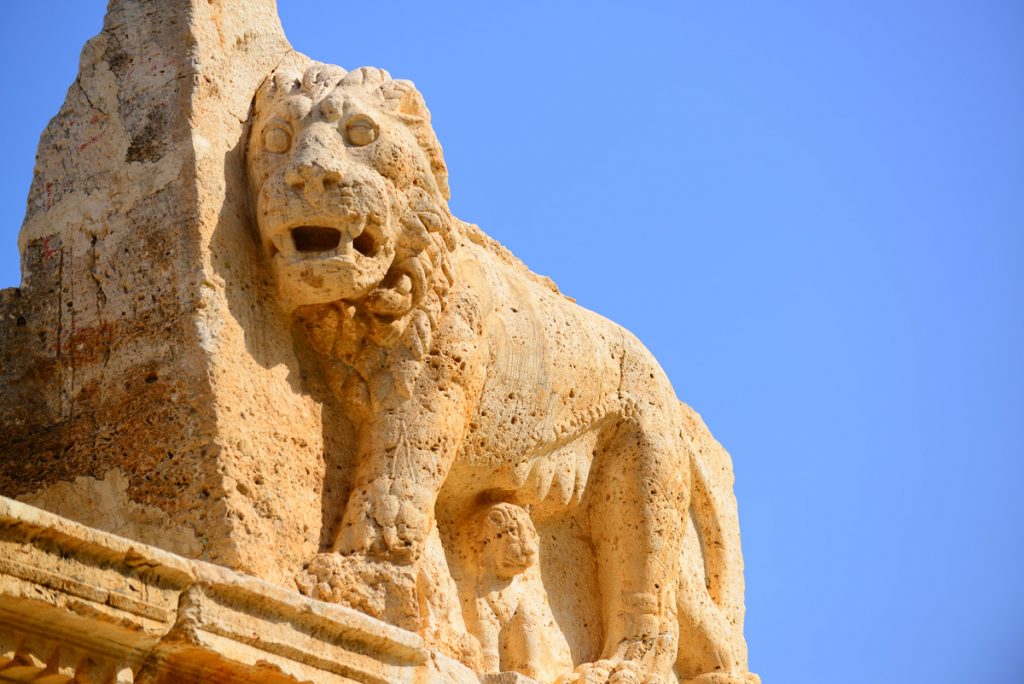
To enter the palace, visitors in ancient times would cross a dam and pass through an imposing gate. The palace’s entrance features a small courtyard fronted by two grand columns, flanked by additional engaged columns on each side. For symmetry, a replica facade adorns the southern side, adding to its visual harmony.
One of Qasr Al-Abd’s most enchanting features is its intricate stone carvings. Leopards, perched at the base of the long walls with raised paws, double as fountains, their sculpted forms mimicking the spotted fur of the majestic animals. At the corners of the upper facade, lionesses tenderly depicted suckling their cubs add an exquisite touch of artistry and detail. These carvings remain some of the finest examples of decorative stonework from the Hellenistic period.
The palace formed part of a vast estate, originally enclosed by protective walls and brimming with landscaped parks of trees and shrubs.
A stone olive press found on-site suggests the estate’s partial self-sufficiency, hinting at its role as both a place of grandeur and productivity. Today, much of this estate lies beneath the modern village of Iraq al-Amir, but its rich history still resonates.
Despite its splendour, misfortune marked the history of Qasr Al-Abd. Its owner, Hyrcanus, met a tragic end in 175 BC, leaving the palace unfinished. Centuries later, the powerful Galilee earthquake of 363 AD led to its collapse, burying intricate reliefs and sculptures under massive stone debris for hundreds of years.
Remarkably, in recent decades, concerted efforts have brought parts of Qasr Al-Abd back to life. Visitors can now admire the partially reconstructed ground floor, complete with its twin portals and the remains of the stunning life-sized lion reliefs that once flanked its corners. The leopard fountains, decorative capitals, and various architectural fragments stand as a tribute to the craftsmen who envisioned its beauty.
For those captivated by a blend of history, craftsmanship, and resilience, Qasr Al-Abd offers an unparalleled glimpse into the grandeur of Hellenistic architecture in Jordan. A visit promises not only a journey into the past but also an appreciation for the timeless artistry and enduring spirit of this remarkable site.
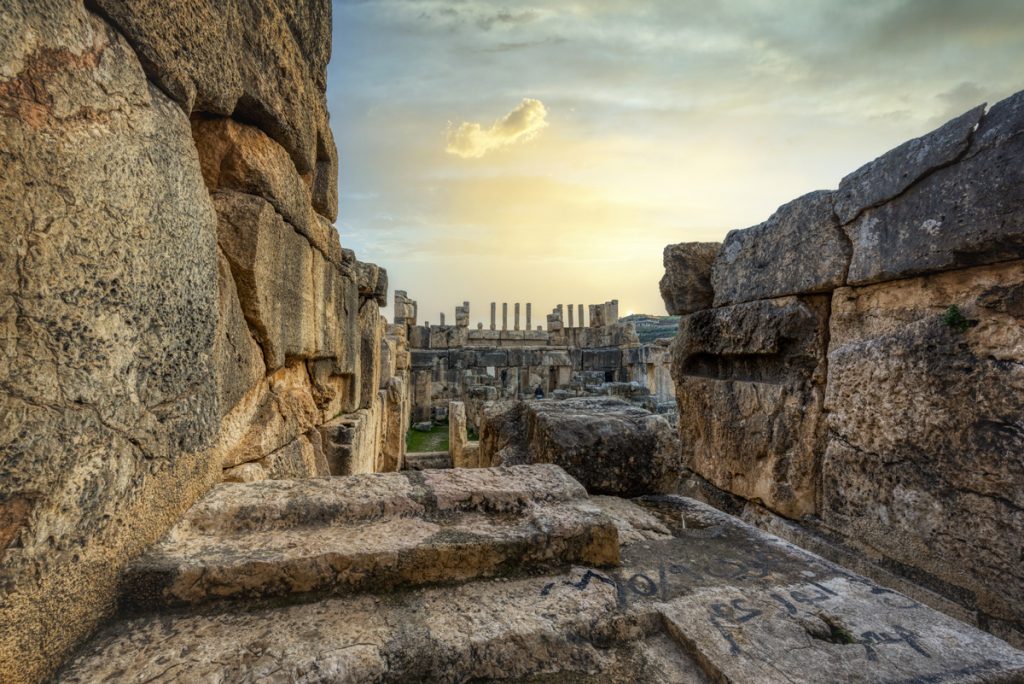
Key Moments in History
Construction in the Hellenistic Period (2nd Century BCE): Qasr Al-Abd was built by Hyrcanus of the Tobiad family as a grand palace showcasing Hellenistic architecture, blending artistic elegance with monumental scale.
Connection to the Tobiad Family: The structure symbolised the wealth and power of the Tobiad family, who were influential figures in the region during this era.
Key Moments in History
Construction in the Hellenistic Period (2nd Century BCE): Qasr Al-Abd was built by Hyrcanus of the Tobiad family as a grand palace showcasing Hellenistic architecture, blending artistic elegance with monumental scale.
Connection to the Tobiad Family: The structure symbolised the wealth and power of the Tobiad family, who were influential figures in the region during this era.
Unfinished Construction: The palace's incomplete state provides insight into its ambitious vision, possibly halted due to financial or political challenges faced by its builders.
Earthquake Damage: Over centuries, earthquakes severely damaged the structure, reshaping it into the ruins seen today and preserving its mystery.
Modern Rediscovery (20th Century): Archaeological studies reignited interest in the palace, uncovering its artistic details, such as the lion and leopard reliefs, and its connection to Hellenistic influence in Jordan.
Preservation Efforts: Efforts have been made to protect and maintain the site, ensuring its architectural and historical significance continues to inspire visitors and scholars alike.
Cultural Landmark: Today, Qasr Al-Abd stands as an enduring relic of ancient ingenuity and ambition, captivating history enthusiasts with its timeless beauty and fascinating backstory.

